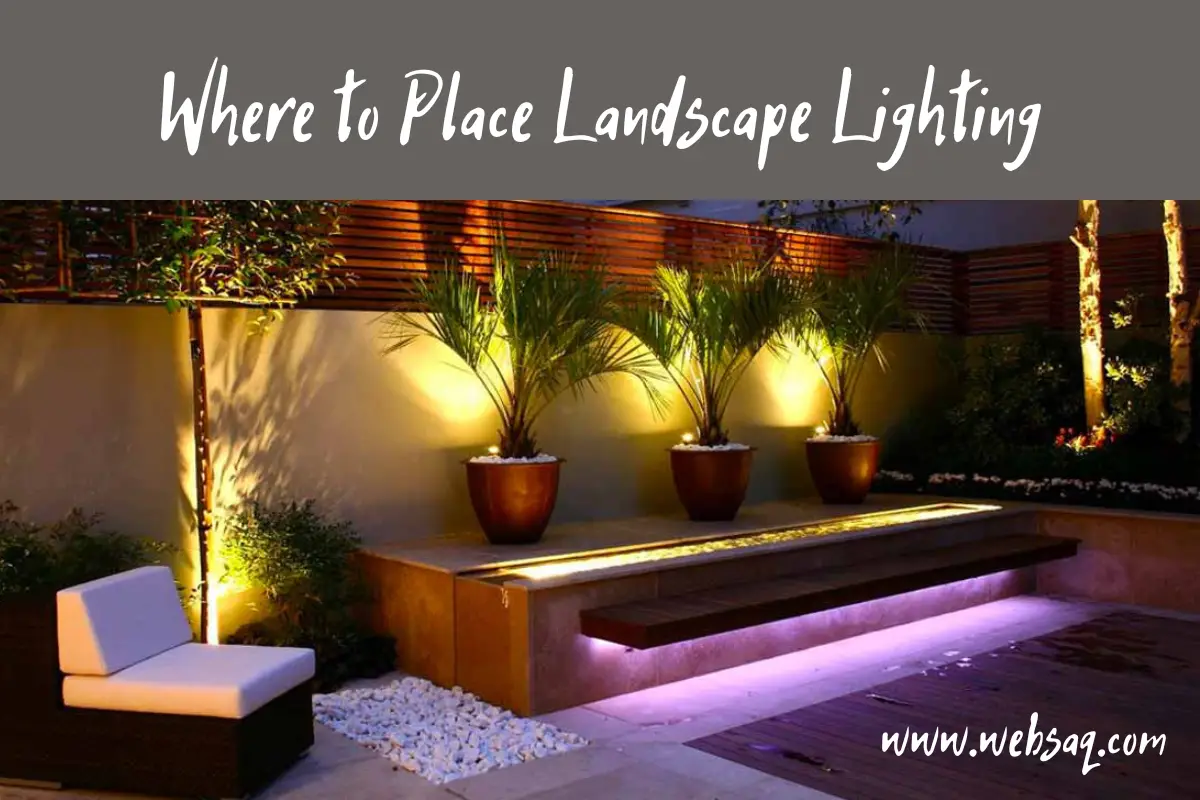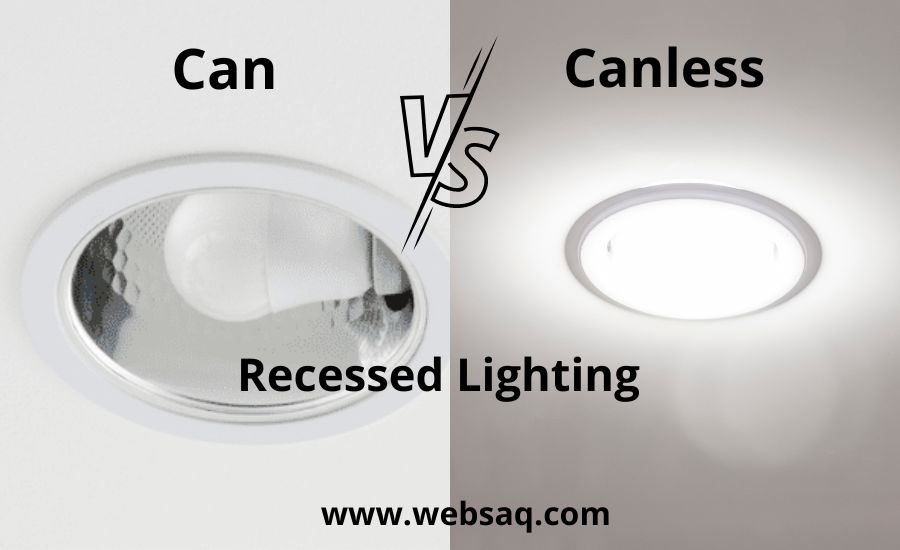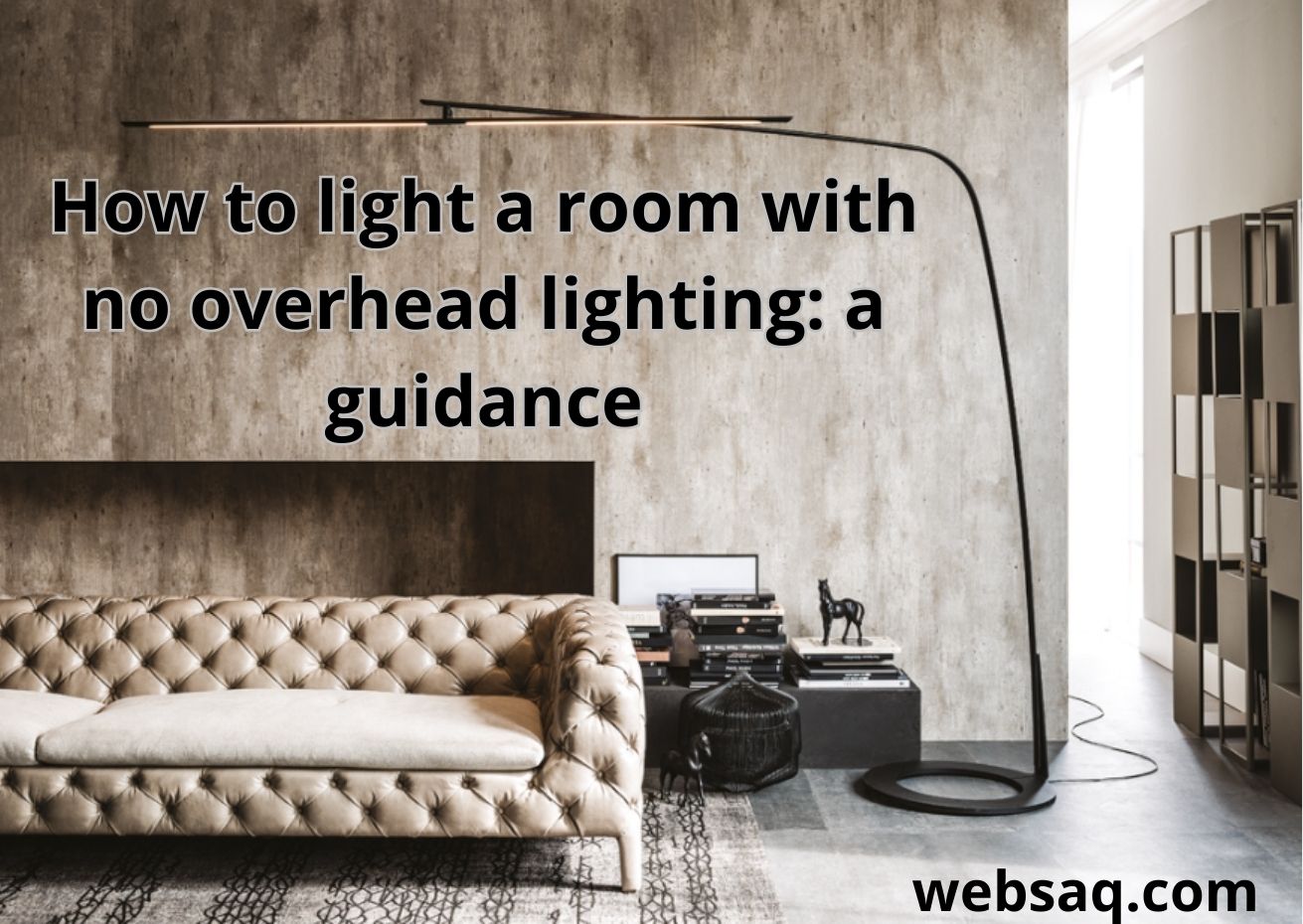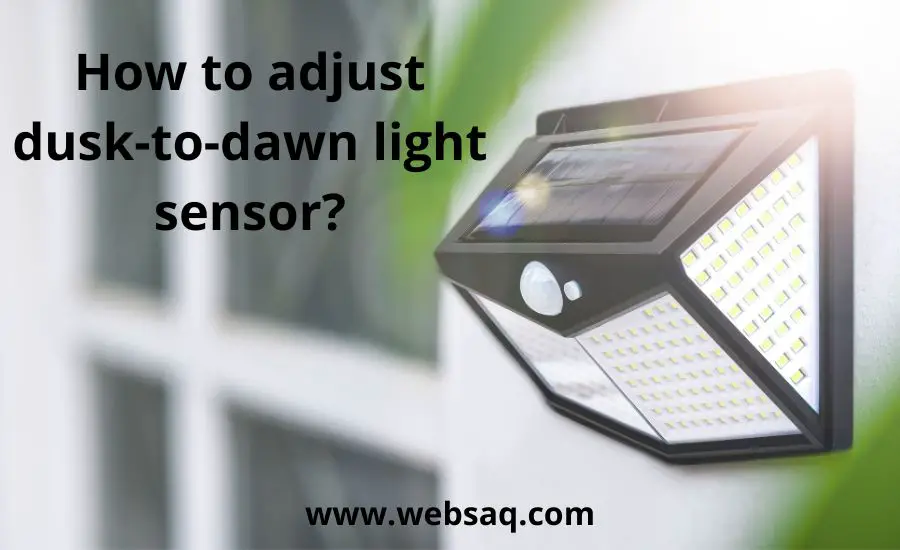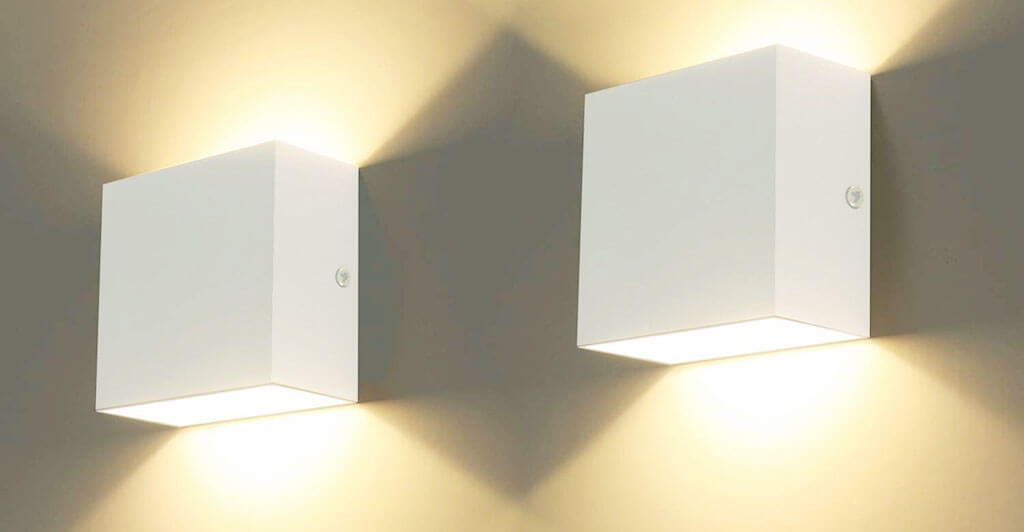Landscape lighting is a great way to add beauty, safety, and security to your outdoor space. Whether you want to accentuate the architectural features of your home or highlight specific garden elements like trees, shrubs, or water features, strategically placed landscape lighting can make all the difference.
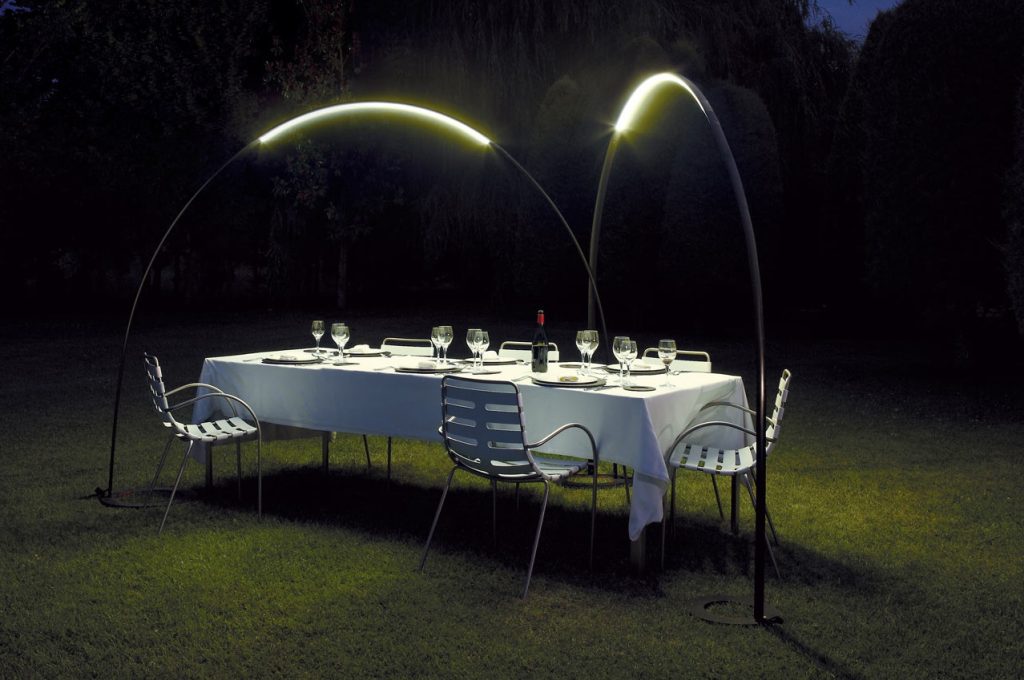
Factors to consider when placing landscape lighting
When it comes to deciding where to place your landscape lighting, several factors come into play.
Do you have a particular tree or statue that would look stunning with some well-placed lights? Or maybe you want to draw attention to an outdoor seating area for evening entertaining?
There are many different types of landscape light fixtures available on the market today – from sleek modern designs to more traditional lantern-style options.
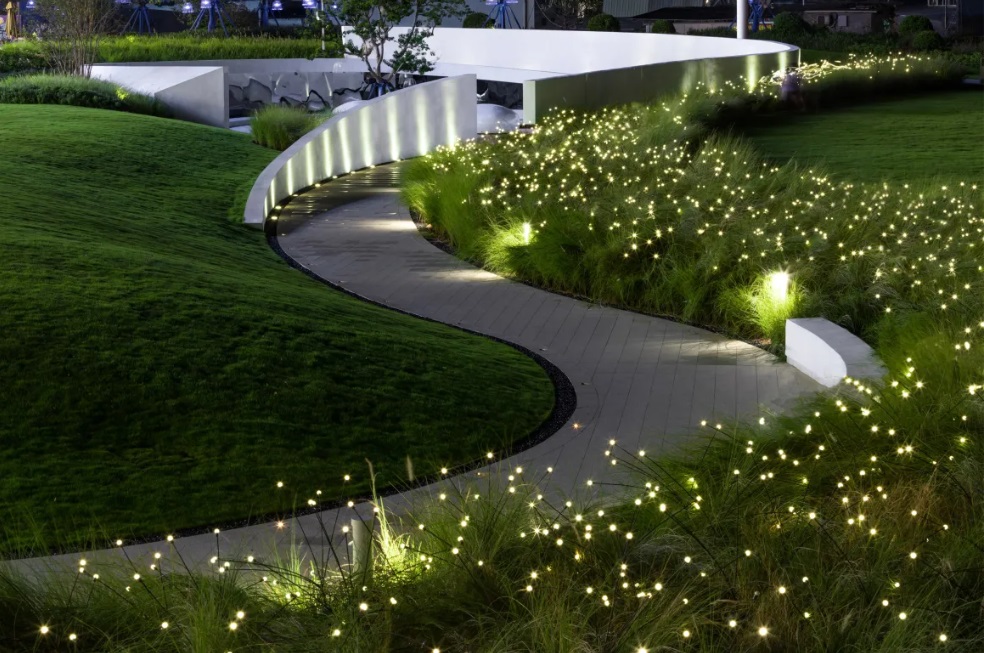
Where to place landscape lighting?
Once you’ve considered these factors, it’s time for the fun part: placing your lights!
Start with a plan
Sketch out a rough drawing of your yard and mark down where each fixture will go before installing anything.
Experiment with angles
Where to place landscape lighting? Play around with positioning until you find just the right angle for each light.
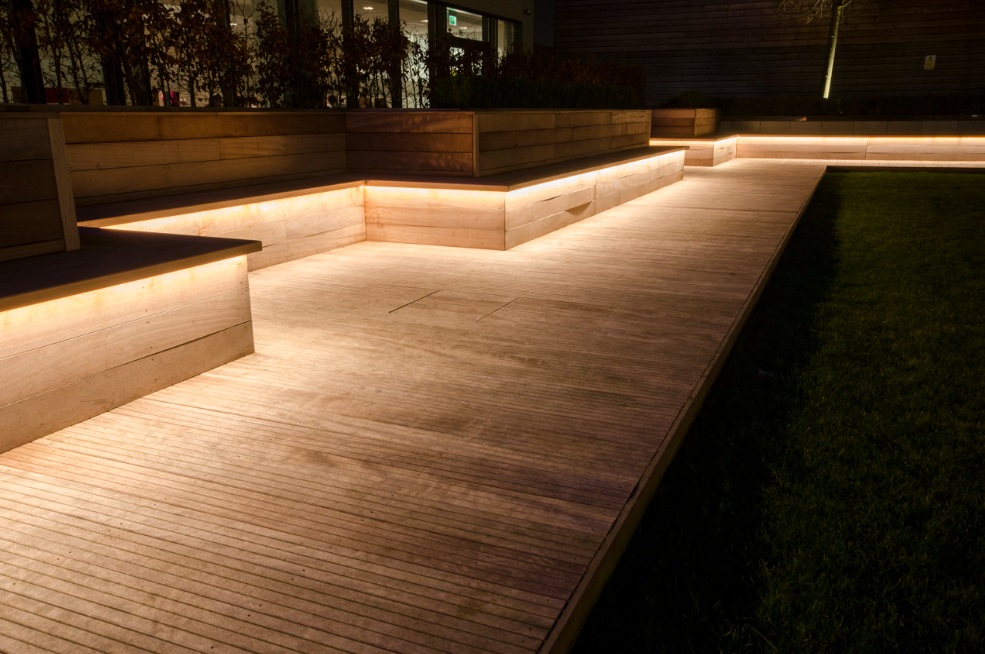
Tips for creating a stunning outdoor environment with landscape lighting
Outdoor lighting can transform your outdoor space into a stunning and inviting environment, but it’s important to know where to place the lights for maximum effect.
Here are some additional tips inspired by expert advice from landscaping professionals.
Use up-lighting
Up-lighting is a technique that involves placing lights at ground level and angling them upwards toward trees or other tall features in your yard.
Walls, trees, and shrubs up lighting create a stately and majestic appearance that highlights the beauty of these elements while adding depth and dimension to your landscape.
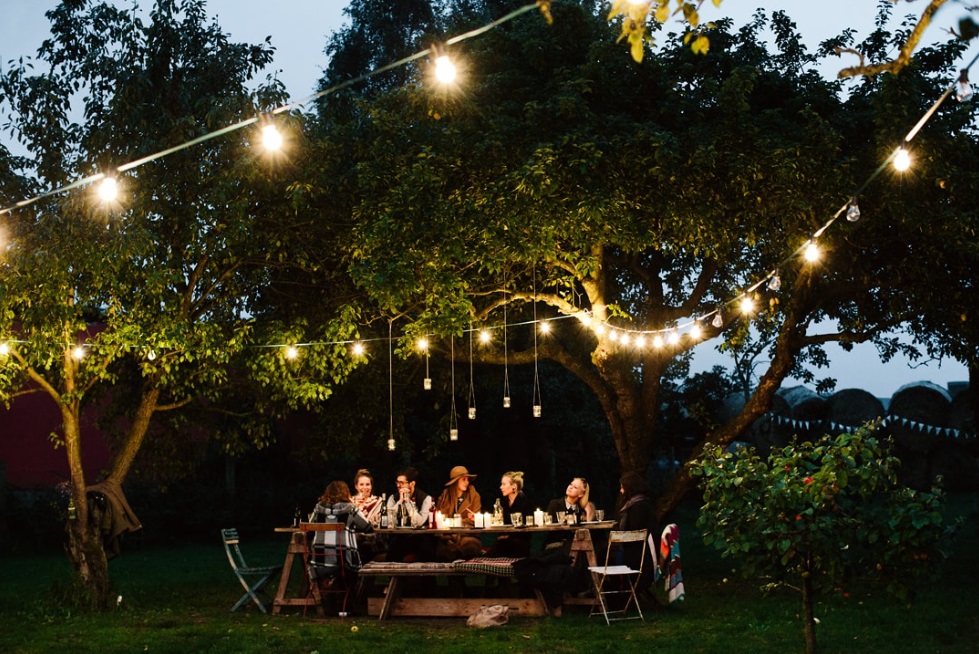
Down lighting
Attach lighting up high and make them shine downward. Down lighting techniques involve placing lights up high and shining them downward.
Down lighting creates a soft glow that can help illuminate large areas of your outdoor space while providing a gentle ambiance.
Direct down lighting can be used to mimic the effect of moonlight, create shadows or highlight specific features such as seating areas or garden beds.
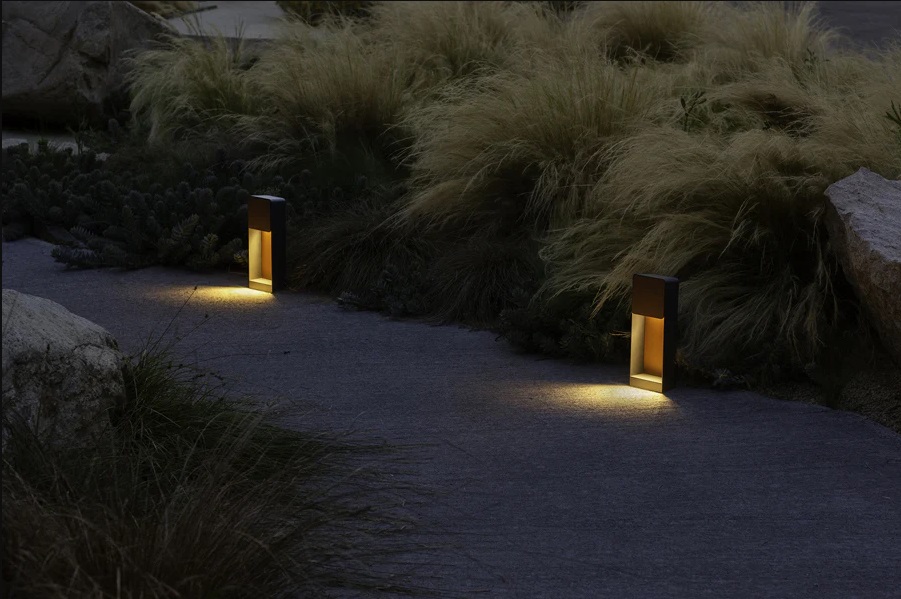
Accent lighting
It is a great way to highlight specific features in your outdoor space such as trees, sculptures, or architectural elements.
By placing a narrow beam of light from a hidden fixture in these areas, you can create a dramatic effect that adds depth and dimension while providing added security.
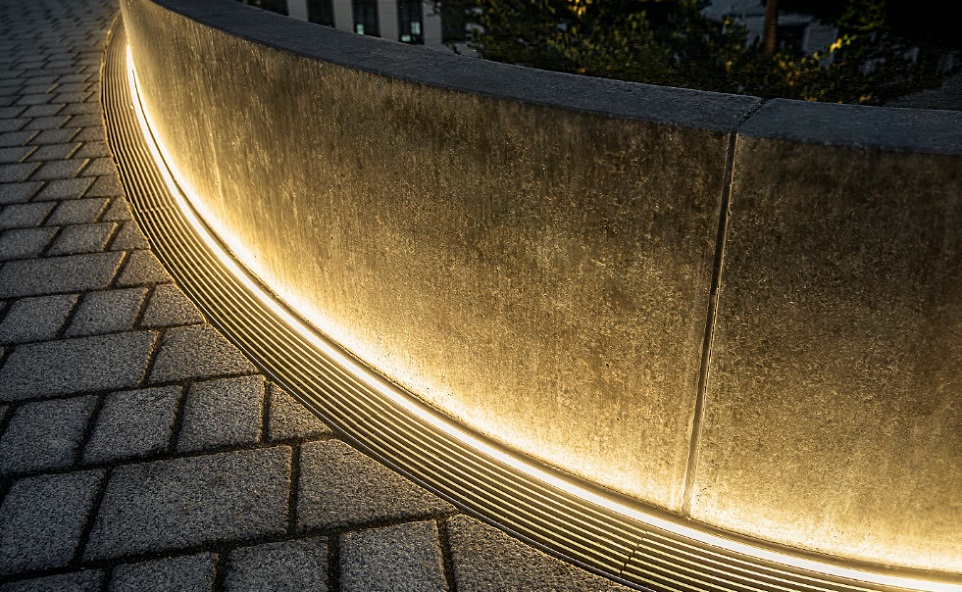
Silhouette lighting
This is a technique that involves placing lights behind an object to create a dramatic outline effect on a soft light background.
This can be particularly effective when highlighting trees or shrubs with unique shapes or forms, creating a stunning visual display after dark.
The silhouette is created by placing a spotlight at the base of an outdoor feature.
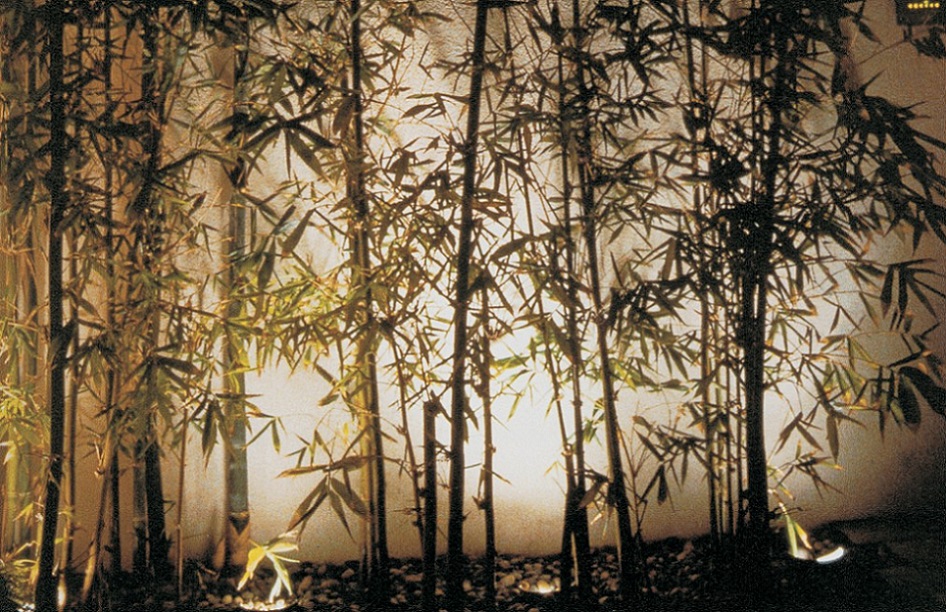
Add underwater lighting
If you have water features, consider adding fountains, pools, or ponds water lighting for added drama after dark. To properly illuminate underwater stairs in the pool, lights should be no more than 12 inches below the surface.
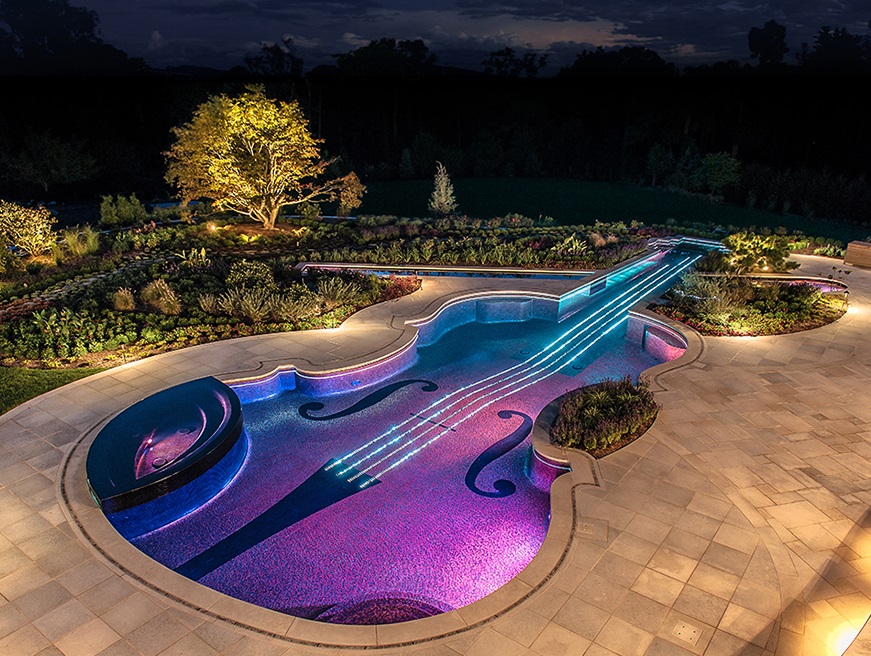
Path lighting
Path lighting is an essential element of any landscape lighting design, providing both safety and ambiance.
By illuminating walkways and pathways with hidden position path lighting, you can guide your guests safely to your door while also creating a warm and inviting atmosphere.
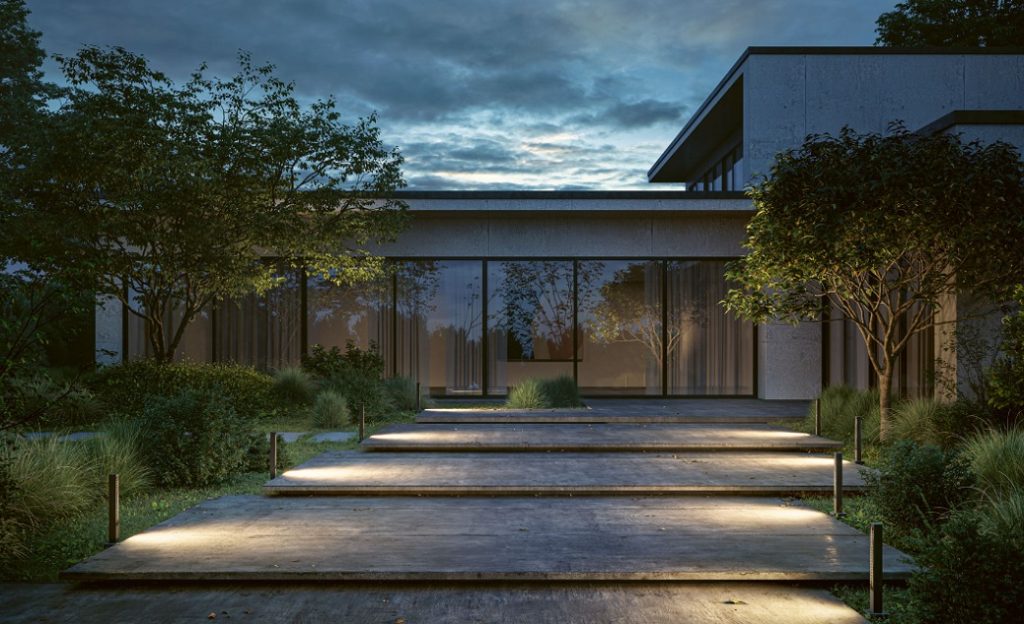
Wall-washing
This is a technique that involves placing lights on the ground or mounted on walls to illuminate a large surface area such as a wall, fence, or facade.
A wide-angle flood light with low wattage is recommended for a more subtle effect.
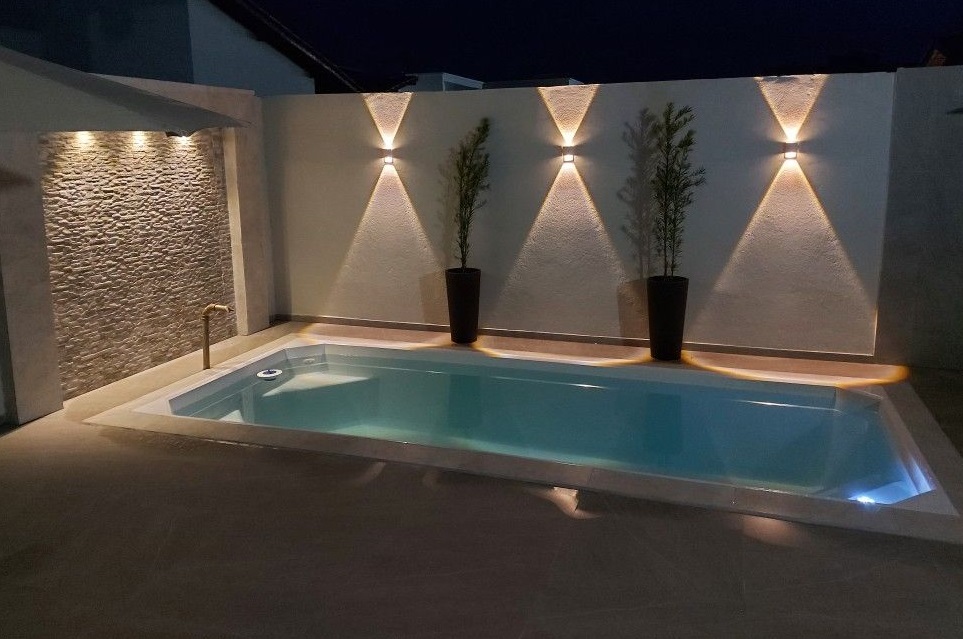
Shadowing
Shadowing is a technique that involves placing lights in front of an object to create shadows on the surface behind it. Low lighting angled up makes the shadow even larger.
Illuminating background surface casts dynamic visual effects that add depth and interest to your outdoor space.
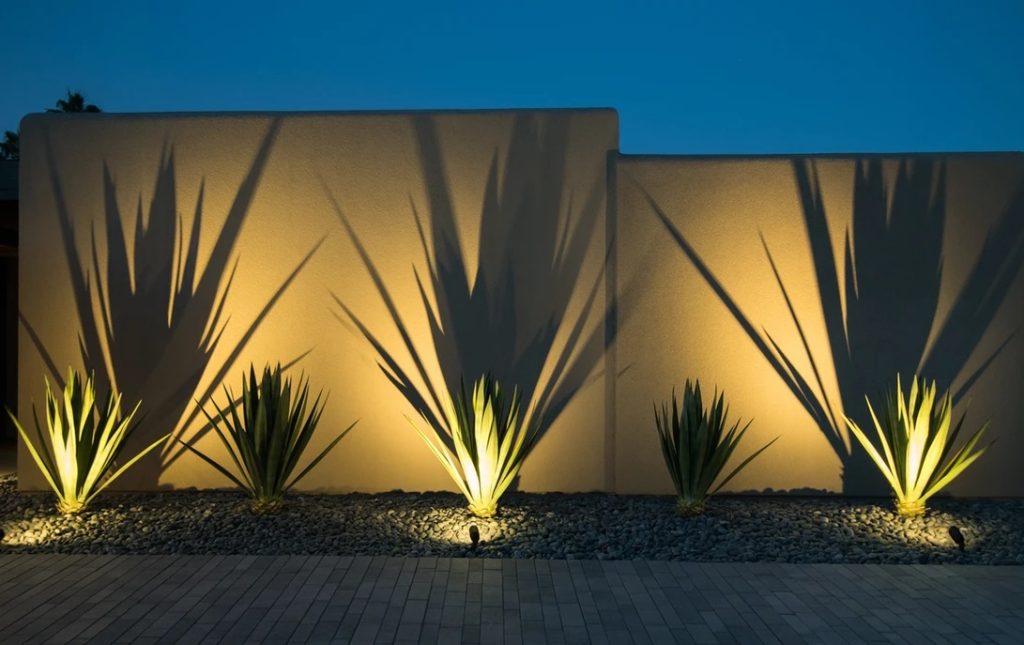
FAQ
The optimal distance between landscape lights depends on the light fixture type, the height of surrounding plants or structures, and what particular feature they’re illuminating.
Where to place landscape lighting? As a general rule, fixtures should be spaced about 8-10 feet apart along walkways and pathways while trees should have uplights placed at their base approximately 3-4 feet away from their trunk.
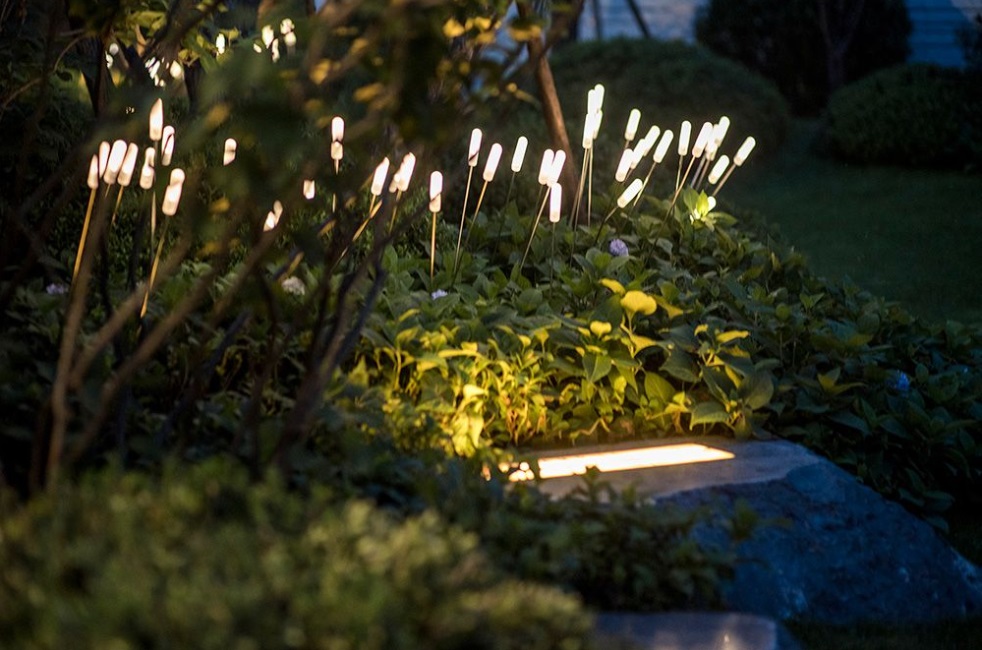
Conclusion
Landscape lighting is a beautiful and practical way to enhance your outdoor living space. Whether you want to highlight specific features, provide safety and security or simply add ambiance, there are many ways to use landscape lighting effectively.

Here, I provide valuable insights into the lighting industry, drawing from 12 years of experience. My aim is to share useful and practical tips, life hacks, and comprehensive product reviews. I hope that collective expertise, advice, and recommendations prove beneficial to you.

